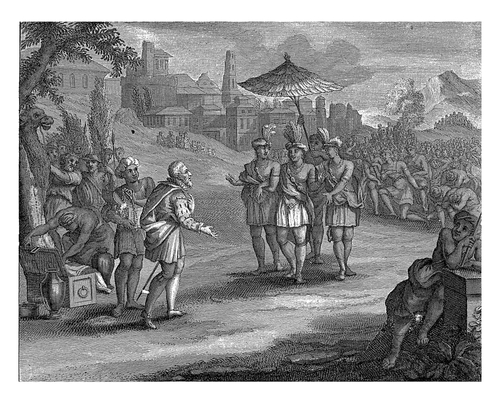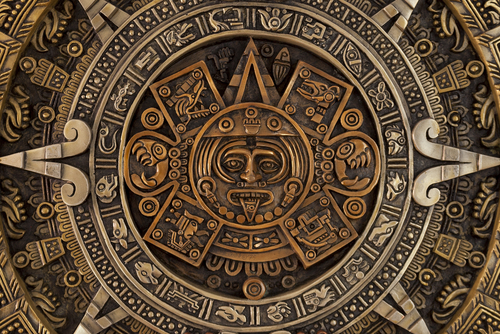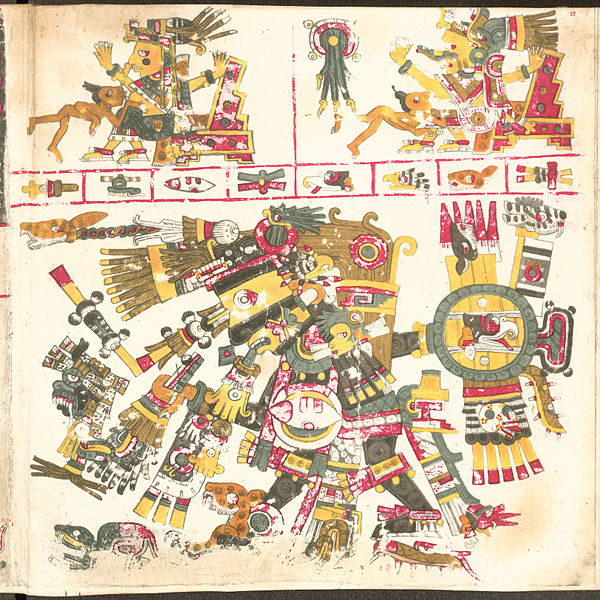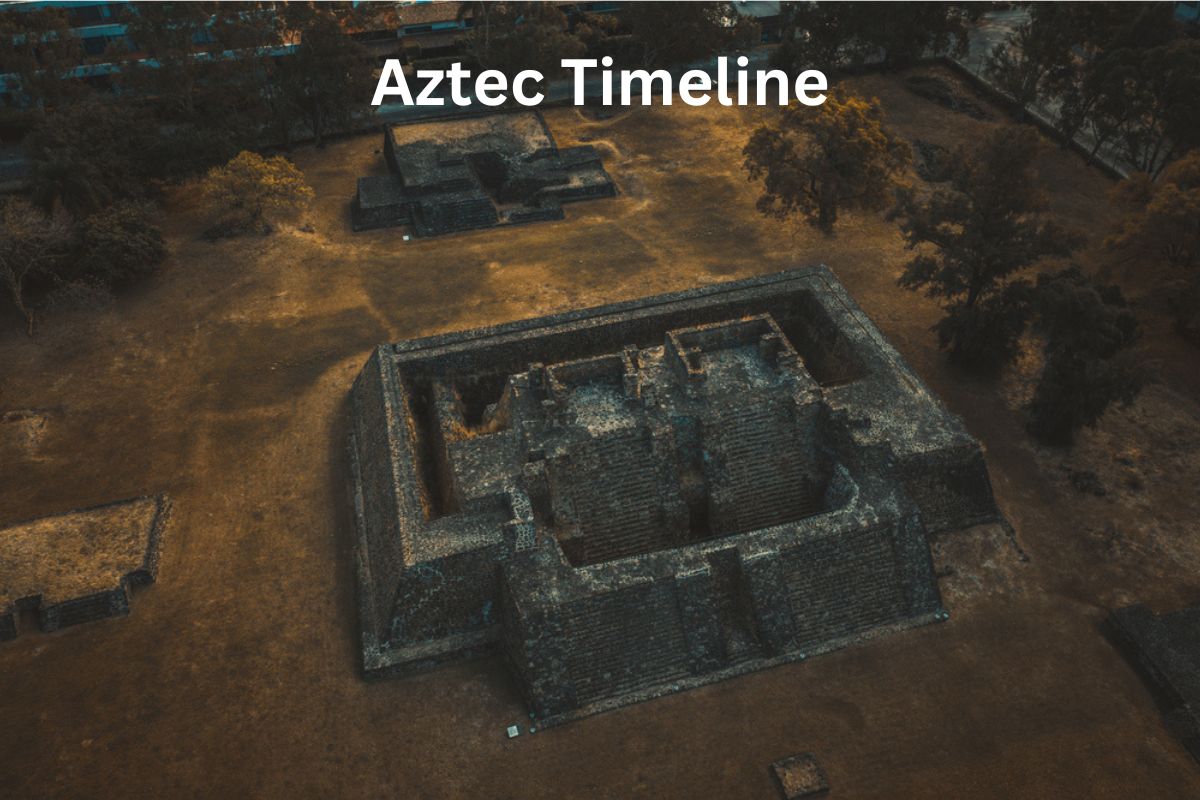The Aztecs were a Mesoamerican culture that flourished in central Mexico in the post-classic period from 1300 to 1521. The Aztec culture is generally grouped with the cultural complex known as the Nahuatl-speaking cultures, which also includes the Toltec, Chichimec, and Teotihuacán civilizations.
The Aztec civilization was incredibly advanced for its time in terms of architecture, agriculture, and society, building grand cities like Tenochtitlan, an architectural marvel with sophisticated infrastructure and a population comparable to the largest European cities at that time.
The Aztecs were known for their intricate social structure, vibrant culture – including rich mythology and religious traditions, and their practice of human sacrifice, which while alarming to many, was a deeply ingrained part of their belief system.
The Aztec empire came to an end in the 16th century when Spanish conquerors led by Hernán Cortés, allied with other indigenous tribes of the region, defeated them. Despite their fall, the Aztecs left a lasting legacy on the culture and history of Mexico.
| Year(s) | Event |
|---|---|
| 1100-1200 AD | The Aztecs start migrating to the Valley of Mexico. |
| 1248 AD | Aztecs settle on Chapultepec Hill, are later forced to leave by the Culhuacan tribe. |
| 1325 AD | The Aztecs establish the city of Tenochtitlan on an island in Lake Texcoco. |
| 1376-1395 AD | Reign of Acamapichtli, the first tlatoani of Tenochtitlan. |
| 1427 AD | The Aztec Empire is established after the formation of the Triple Alliance with Texcoco and Tlacopan. |
| 1440-1469 AD | Reign of Moctezuma I, the empire expands through conquest. |
| 1469-1481 AD | Reign of Axayacatl, the empire expands further. |
| 1486-1502 AD | Reign of Ahuitzotl, the empire reaches its greatest extent. |
| 1502-1520 AD | Reign of Moctezuma II, who is the ruler when the Spanish arrive. |
| 1519 AD | Hernán Cortés and his Spanish expedition arrive in Mexico. |
| 1520 AD | The Massacre in the Great Temple of Tenochtitlan occurs, Moctezuma II dies, and Cuitlahuac takes the throne. |
| 1521 AD | Tenochtitlan falls to the Spanish and their allies, Cuauhtémoc is captured, marking the end of the Aztec Empire. |
Timeline of the Aztec Empire
1100-1200 AD – The Aztecs start migrating to the Valley of Mexico
The Aztecs, also known as the Mexica, were originally a nomadic tribe from the northern regions of modern-day Mexico.
Also Read: Aztec Accomplishments
The exact origin of the Aztecs is unknown, but they are believed to have come from a homeland they called Aztlan, the location of which remains a mystery.
During the 11th to 12th centuries, they began to migrate south towards the fertile Valley of Mexico, attracted by its abundant resources and the potential for cultivation.

1248 AD – Aztecs settle on Chapultepec Hill, are later forced to leave by the Culhuacan tribe
The Aztecs initially settled on Chapultepec Hill in the Valley of Mexico. Chapultepec, meaning “Grasshopper Hill” in Nahuatl, was a strategic location due to its elevated position and the presence of a freshwater spring.
Also Read: Tenochtitlan Facts
However, conflicts arose with the existing inhabitants of the area, the Culhuacan tribe. After a series of disputes, the Aztecs were forced to leave Chapultepec and wander once more.
1325 AD – The Aztecs establish the city of Tenochtitlan on an island in Lake Texcoco
According to legend, the Aztec god Huitzilopochtli had prophesied that the Aztecs would establish a great city on a location where they would find an eagle perched on a cactus, devouring a snake.
This vision was realized on a small island in Lake Texcoco, and it was here that the Aztecs decided to build their capital city, Tenochtitlan, in 1325.
The city would grow to become one of the largest and most sophisticated cities in the pre-Columbian Americas, with advanced systems for agriculture, sanitation, and water supply. The image from the prophecy is now depicted on the Mexican flag.
1376-1395 AD – Reign of Acamapichtli, the first tlatoani of Tenochtitlan
Acamapichtli was elected as the first tlatoani (ruler) of Tenochtitlan in 1376, and his reign marked the beginning of the Aztec civilization’s political and social structure. His main contribution was establishing the societal hierarchy and laws that governed the citizens of Tenochtitlan.
During his reign, the city started to gain influence and power in the region. Acamapichtli’s reign was characterized by stability and growth, and he was instrumental in developing alliances and relationships with neighboring states.

1427 AD – The Aztec Empire is established after the formation of the Triple Alliance with Texcoco and Tlacopan
In 1427, the city-states of Tenochtitlan, Texcoco, and Tlacopan formed the Triple Alliance, marking the official beginning of the Aztec Empire. The formation of the Triple Alliance was a strategic move to defeat the Tepanec Empire, which had dominated the region until then.
This alliance proved to be successful, and it gave birth to the Aztec Empire that controlled and influenced much of the Mesoamerican region.
1440-1469 AD – Reign of Moctezuma I, the empire expands through conquest
Moctezuma I, also known as Moctezuma Ilhuicamina, became the fifth tlatoani of Tenochtitlan in 1440. His reign was characterized by significant territorial expansion and consolidation of the Triple Alliance’s control over other city-states.
He carried out numerous military campaigns to expand the empire and initiated major construction projects in Tenochtitlan, transforming it into a major power in the region.
1469-1481 AD – Reign of Axayacatl, the empire expands further
Axayacatl, the sixth tlatoani of Tenochtitlan, continued the expansionist policies of his predecessor.
He is particularly known for his conquest of the powerful city-states of Tlatelolco (a city on the same island as Tenochtitlan) and the Tarascan state (in the modern-day Michoacán and Guerrero).
However, his reign was also marked by a disastrous military campaign against the city-state of Tlaxcala, which resisted Aztec domination and later became a crucial ally for Hernán Cortés and his Spanish troops.

1486-1502 AD – Reign of Ahuitzotl, the empire reaches its greatest extent
Ahuitzotl was the eighth tlatoani of Tenochtitlan and was known for his aggressive expansion policy. His reign was characterized by significant territorial expansion, and the Aztec Empire reached its greatest size under his leadership.
He was a strong and feared ruler, completing conquests as far south as present-day Guatemala and as far east as the Gulf of Mexico. He’s also known for constructing the Great Temple’s extension and the inauguration ceremony, where thousands of people were reportedly sacrificed.
1502-1520 AD – Reign of Moctezuma II, who is the ruler when the Spanish arrive
Moctezuma II became the ninth tlatoani in 1502. He continued to expand the empire and strengthened the central control over the provinces. Moctezuma II was known for his complex religious rituals and significant contribution to Tenochtitlan’s architecture.
However, his reign was marked by the arrival of Spanish explorers in 1519, led by Hernán Cortés. Initial interactions were peaceful, but tensions escalated, leading to conflicts.
1519 AD – Hernán Cortés and his Spanish expedition arrive in Mexico
In 1519, Spanish explorer Hernán Cortés arrived on the Mexican coast with about 600 men. Initially received as an ambassador, Cortés quickly saw an opportunity to topple the empire.
He forged alliances with disgruntled city-states and made a controversial alliance with La Malinche, a Nahua woman who served as his interpreter and advisor.
1520 AD – The Massacre in the Great Temple of Tenochtitlan occurs, Moctezuma II dies, and Cuitlahuac takes the throne
In Cortés’ absence, Pedro de Alvarado, a Spanish captain, ordered a massacre of Aztecs celebrating a religious festival in the Great Temple of Tenochtitlan, igniting a rebellion. Upon Cortés’ return, he found the Spanish forces besieged.
Moctezuma II was killed during the initial stages of the uprising, though the details of his death remain unclear. His brother Cuitlahuac succeeded him but reigned for a short period due to a smallpox outbreak brought by the Spanish.
1521 AD – Tenochtitlan falls to the Spanish and their allies, Cuauhtémoc is captured, marking the end of the Aztec Empire
Cuitlahuac’s successor, Cuauhtémoc, organized a resistance against the Spanish, but after a prolonged siege, Tenochtitlan fell to the Spanish and their indigenous allies on August 13, 1521. Cuauhtémoc was captured and later executed, marking the end of the Aztec Empire. The Spanish, led by Cortés, began the process of colonizing the region, marking the start of a new era in Mexico’s history.
